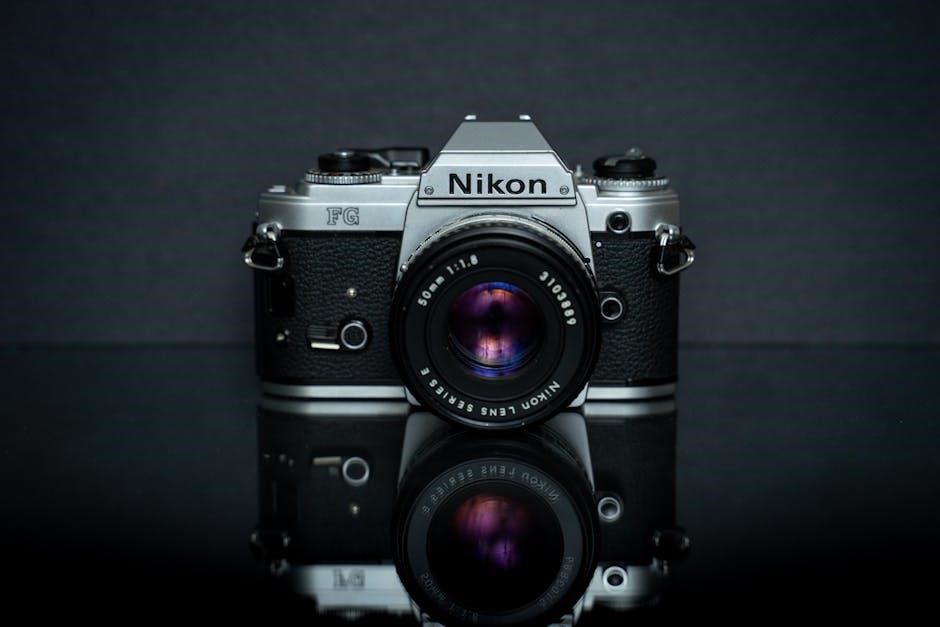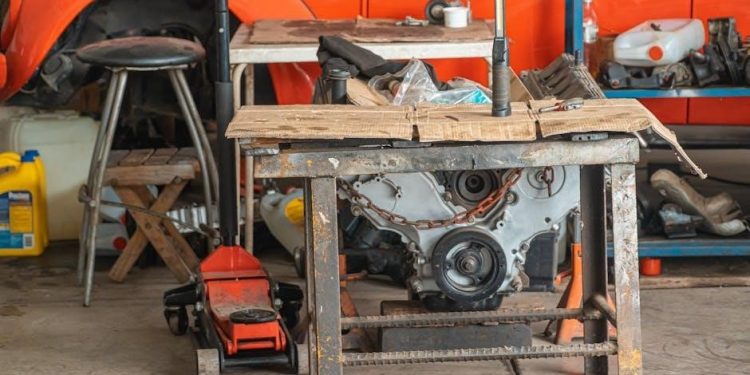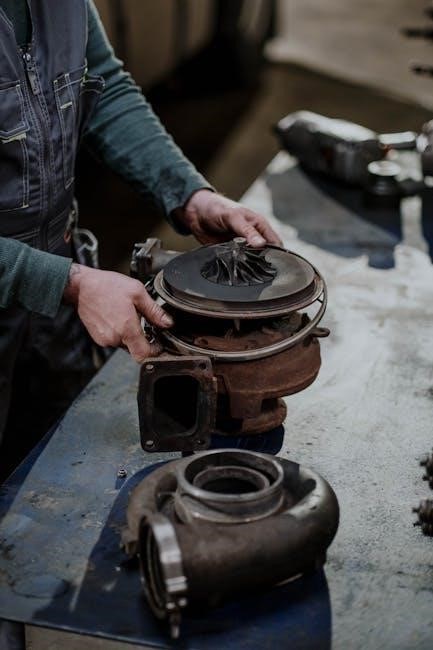This manual provides essential information for the Traxxas 1/16 E-Revo VXL, including parts identification, exploded views, and maintenance guidelines. It serves as a comprehensive resource for owners to understand and service their model effectively.
1.1 Purpose of the Manual
The purpose of the Traxxas 1/16 E-Revo VXL parts manual is to provide a detailed guide for identifying, maintaining, and replacing components of the vehicle. It serves as a reference for understanding the model’s structure, ensuring proper assembly, and facilitating repairs. The manual is designed to help users optimize performance, troubleshoot issues, and extend the lifespan of their Traxxas 1/16 E-Revo VXL. By following the guidelines outlined, owners can maintain their vehicle in peak condition and address any mechanical or electrical challenges effectively.
1.2 Key Features of the Traxxas 1/16 E-Revo VXL
The Traxxas 1/16 E-Revo VXL boasts a robust monocoque-style chassis, waterproof electronics, and a powerful brushless motor system. It features a rocker-actuated suspension inspired by F1 designs, ensuring superior handling and stability. The vehicle is equipped with a high-performance Velineon ESC, offering precise control and efficient power delivery. Its compact 4mm chassis provides durability, while the drivetrain is designed for optimal torque and speed. The model also includes a battery management system to protect LiPo batteries and ensure safe operation. These features make the Traxxas 1/16 E-Revo VXL a high-performance, ready-to-race miniature RC vehicle suitable for both beginners and experienced enthusiasts.

Vehicle Components Overview
The Traxxas 1/16 E-Revo VXL features a durable chassis, advanced suspension, high-efficiency transmission, and robust drivetrain. Key components include the ESC, motor, and drivetrain system, designed for optimal performance and reliability.
2.1 Chassis and Suspension System

The Traxxas 1/16 E-Revo VXL features a lightweight yet durable monocoque-style chassis, providing excellent rigidity and protection for internal components. The suspension system includes rocker-actuated arms with oil-filled shocks, offering smooth damping and consistent handling. This design, inspired by full-scale racing, ensures stability at high speeds and on various terrains. The chassis is integrated with waterproof electronics, making it suitable for all-weather performance. Sealed differentials and sturdy suspension components enhance durability, while maintaining ease of maintenance and upgradeability. This robust setup ensures optimal performance, making the E-Revo VXL a versatile and reliable choice for enthusiasts.
2.2 Transmission and Drivetrain
The Traxxas 1/16 E-Revo VXL features a sealed transmission system with a 2-speed design, ensuring smooth and efficient power delivery. The drivetrain includes a planetary gear differential and a telescoping driveshaft, enhancing durability and reducing maintenance. The transmission is designed to handle high torque outputs from the brushless motor, providing consistent performance across various terrains. Its compact layout minimizes weight distribution issues, while the drivetrain’s sealed components protect against dirt and debris. This system ensures reliable power transfer to all wheels, making the E-Revo VXL both agile and responsive. Regular lubrication of gears and shafts is recommended to maintain optimal functionality and longevity.
2.3 Driveshafts and Axles
The Traxxas 1/16 E-Revo VXL is equipped with durable, telescoping driveshafts designed to handle high-speed impacts and rough terrain. The driveshafts are constructed from high-strength materials, ensuring minimal flex and consistent power delivery. The axles feature a robust design with captured hinge pins, preventing damage during extreme driving conditions. Both components work seamlessly with the transmission and suspension system to provide smooth torque transfer. Regular inspection and lubrication of the driveshafts and axles are essential to maintain performance and prevent wear. The modular design allows for easy replacement and upgrades, making maintenance straightforward and efficient for enthusiasts of all skill levels.
2.4 Electronic Speed Control (ESC)
The Traxxas 1/16 E-Revo VXL features a high-performance Electronic Speed Control (ESC) designed to optimize power delivery and efficiency. The ESC is waterproof, ensuring reliable operation in various conditions. It includes built-in Low-Voltage Detection (LVD) to protect LiPo batteries from over-discharge. The ESC also provides smooth throttle response and programmable settings for customizable performance. Its advanced thermal management system prevents overheating during intense use. The ESC seamlessly integrates with the brushless motor, ensuring maximum power output and consistent control. Regular calibration and firmware updates are recommended to maintain optimal functionality. This component is critical for the vehicle’s speed and responsiveness, making it a cornerstone of the E-Revo VXL’s performance capabilities.
2.5 Motor and Power System

The Traxxas 1/16 E-Revo VXL is equipped with a powerful brushless motor designed for high-speed performance and durability. This motor delivers exceptional torque and efficiency, making it ideal for both racing and off-road adventures. The power system is complemented by a high-capacity LiPo battery, which provides extended runtime and consistent power output. The motor is paired with a waterproof Electronic Speed Control (ESC) that ensures smooth acceleration and precise control. Together, the motor and power system enable the E-Revo VXL to achieve impressive speeds while maintaining reliability. Proper maintenance, such as monitoring battery levels and avoiding over-discharge, is essential to preserve the longevity of the power system.

Tools and Equipment Required
Essential tools include screwdrivers, pliers, wrenches, and hex keys for assembly and maintenance. A clean workbench and parts organizer are recommended for efficiency and organization.
3.1 Essential Tools for Assembly and Maintenance
For the Traxxas 1/16 E-Revo VXL, essential tools include screwdrivers, pliers, wrenches, and hex keys. A soldering iron and multimeter may be needed for electrical repairs or upgrades. A clean, well-lit workbench and parts organizer are highly recommended to keep components tidy and accessible. Proper tools ensure precise adjustments and prevent damage to small parts. Always refer to the manual for specific tool requirements, as some tasks may demand specialized equipment. Using the right tools is crucial for maintaining performance and extending the lifespan of your model.
3.2 Specialized Tools for Upgrades and Repairs
Specialized tools are crucial for advanced upgrades and repairs on the Traxxas 1/16 E-Revo VXL. These include precision torque wrenches for adjusting suspension and drivetrain components, as well as gear pullers for removing stuck parts. A high-quality soldering iron is essential for modifying or repairing electrical connections. Additionally, a set of metric hex keys and nut drivers are often required for specific upgrades. For complex modifications, such as motor or ESC upgrades, specialized tools like a motor tester or multimeter may be necessary. Always ensure tools are compatible with the model’s specifications to avoid damage. These tools are typically available at hobby shops or online retailers specializing in RC parts.
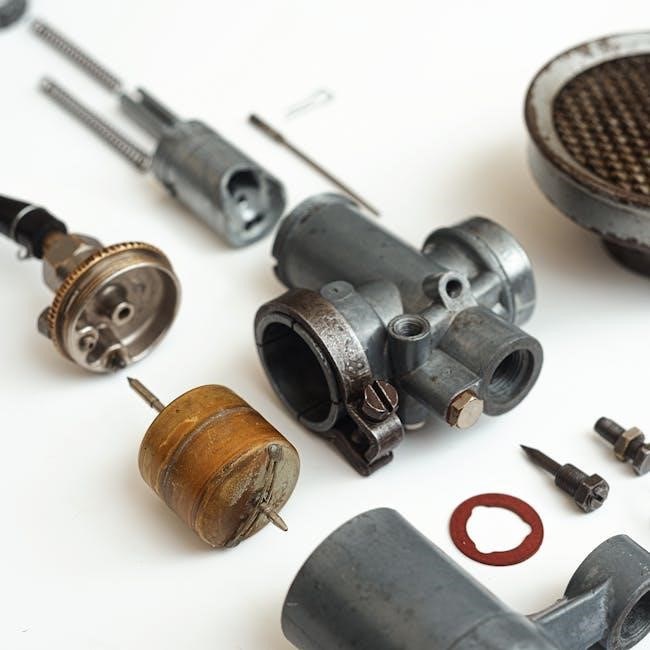
Maintenance and Repair Guidelines
This section outlines essential maintenance routines and repair tips for the Traxxas 1/16 E-Revo VXL. It covers cleaning, lubricating, and inspecting components to ensure optimal performance and longevity. Regular checks and timely repairs prevent major issues, keeping your model running smoothly. Refer to the manual for detailed instructions and Traxxas-recommended practices.
4.1 Regular Maintenance Schedule
A regular maintenance schedule is crucial for the Traxxas 1/16 E-Revo VXL. This involves checking and cleaning the chassis, suspension, and drivetrain after each use. Every 5-10 runs, lubricate moving parts like bearings and gears. Inspect tires for wear and replace them if necessary. Check the motor and ESC for proper function and ensure all screws are tightened. Batteries should be charged as needed and stored correctly. Refer to the manual for a detailed timetable to ensure your model remains in peak condition. Regular maintenance prevents unexpected breakdowns and extends the life of your vehicle.
4.2 Troubleshooting Common Issues
Common issues with the Traxxas 1/16 E-Revo VXL include loss of power, motor malfunction, and drivetrain problems. Loss of power may indicate a faulty ESC or low battery voltage. Check the ESC settings and ensure it is calibrated correctly. Motor issues often arise from overheating or worn brushes, requiring replacement. Drivetrain problems, such as broken driveshafts, can occur due to excessive stress. Regular inspection and timely replacement of worn parts are essential. Consult the manual for detailed diagnostic steps and solutions. Addressing these issues promptly ensures optimal performance and extends the vehicle’s lifespan. Always refer to official Traxxas resources for accurate troubleshooting guidance.
4.3 Battery Care and Management
Proper battery care is crucial for maintaining performance and safety. Always use a Traxxas-approved charger and follow the manual’s charging guidelines. Store batteries at room temperature, avoiding extreme heat or cold. Charge batteries before storage to maintain a 50% charge level. Inspect batteries regularly for damage, swelling, or worn connectors. Avoid over-discharging, as it can damage LiPo cells. Never leave charging batteries unattended. Use a fire-resistant charging bag for added safety. Disconnect the battery when not in use to prevent drain. Monitor voltage levels during operation, and replace batteries if they show signs of degradation. Proper care ensures reliable power and extends battery lifespan.
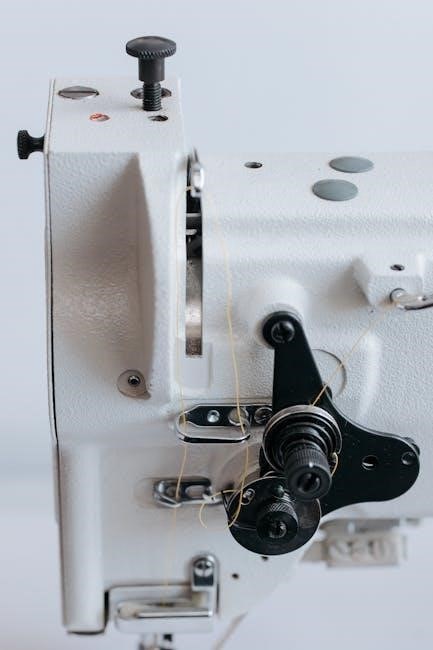
Upgrades and Modifications
This section explores popular upgrades for the Traxxas 1/16 E-Revo VXL, including performance-enhancing parts like brushless motors and aluminum components. Always use Traxxas-approved upgrades for optimal compatibility and safety.
5.1 Performance Upgrades
Enhance your Traxxas 1/16 E-Revo VXL’s performance with upgrades like brushless motors, high-torque servos, and aluminum suspension components. These modifications improve speed, durability, and handling. Consider upgrading to metal gears for the transmission and drivetrain to reduce wear. Adjustable shocks and stiffer springs can enhance suspension performance. For advanced users, tuning the ESC settings or installing a high-performance LiPo battery can unlock more power. Always use Traxxas-approved parts to ensure compatibility and maintain warranty coverage. Follow the manual’s guidelines for proper installation to avoid damage. These upgrades can transform your model into a high-performance racing machine.
5.2 Aesthetic Modifications
Personalize your Traxxas 1/16 E-Revo VXL with aesthetic upgrades to make it stand out. Custom paint jobs, decals, and body kits allow for unique styling. Install LED lights for a vibrant look, and swap stock parts for aluminum or carbon fiber components. Upgraded wheels and tires can enhance both appearance and performance. For a sleek finish, consider chrome or anodized parts. These modifications let you tailor the vehicle’s look to your preference while maintaining its performance capabilities; Aesthetic upgrades are a great way to add personality to your model, making it truly one-of-a-kind on and off the track.

Safety Guidelines
Ensure safe handling of electrical components and batteries to prevent damage or injury. Always follow proper setup and calibration procedures to avoid operational issues.
6.1 Precautions for Handling Electrical Components
When handling electrical components of the Traxxas 1/16 E-Revo VXL, always disconnect the battery first to prevent accidental power-up. Avoid touching sensitive electronics with bare hands, as static electricity can damage components. Use insulated tools to prevent short circuits. Keep the ESC and motor clean and dry, as moisture can compromise performance and safety. Never submerge electrical parts in water or expose them to excessive humidity. Ensure proper connections and avoid over-tightening wires, which can cause damage. Regularly inspect wires and connectors for wear or damage. Follow proper calibration procedures for the ESC and throttle to maintain optimal functionality and prevent operational hazards.
6.2 Battery Safety and Handling
Always follow proper safety protocols when handling the battery of your Traxxas 1/16 E-Revo VXL. Avoid over-discharging LiPo batteries, as this can cause irreversible damage. Use the built-in Low-Voltage Detection feature on the ESC to monitor battery levels. Never charge batteries unattended or near flammable materials. Ensure the charging area is well-ventilated and use a fireproof charging bag for added safety. Store batteries in a cool, dry place at approximately 50% charge when not in use. Avoid physical stress, punctures, or crushing of the battery pack. Dispose of batteries responsibly by discharging them fully and following local regulations. Always use Traxxas-approved chargers and accessories.

Exploded Views and Diagrams
This section provides detailed exploded views and diagrams of the Traxxas 1/16 E-Revo VXL, including chassis, transmission, and drivetrain components, aiding in repairs and upgrades.
7.1 Chassis Exploded View
The chassis exploded view details the structural components of the Traxxas 1/16 E-Revo VXL, showcasing the monocoque-style chassis, suspension links, and shock absorbers. This diagram highlights the integration of waterproof electronics and the rocker-actuated suspension system. It provides a clear visual breakdown of how the chassis is assembled, allowing users to identify individual parts and their relationships. The exploded view is essential for understanding the layout and accessing components during maintenance or upgrades. By referencing this section, users can gain insights into the vehicle’s assembly and ensure proper reinstallation of parts after disassembly.
7.2 Transmission Exploded View
The transmission exploded view illustrates the internal components of the Traxxas 1/16 E-Revo VXL’s drivetrain, including gears, shafts, and bearings. This detailed diagram helps users identify and locate specific parts within the transmission assembly. The exploded view is particularly useful for diagnosing issues, planning repairs, and understanding how the transmission integrates with the rest of the vehicle. By referencing this section, users can gain a clearer understanding of the transmission’s internal mechanisms and ensure proper reassembly after maintenance or upgrades. This visual guide complements the manual’s textual instructions, making it an invaluable resource for both novice and experienced owners.
7.3 Drivetrain Exploded View
The drivetrain exploded view provides a detailed visual breakdown of the Traxxas 1/16 E-Revo VXL’s drivetrain components, including driveshafts, axles, and gearboxes. This diagram helps users identify and locate specific parts within the drivetrain assembly, making it easier to perform maintenance, repairs, or upgrades. The exploded view showcases how components interact and connect, offering a clear understanding of the drivetrain’s structure. By referencing this section, users can better visualize the relationships between parts and ensure accurate reassembly. This resource is particularly useful for diagnosing issues or planning upgrades, making it an essential tool for both novice and experienced model enthusiasts.

Resources and Support
This section provides access to official Traxxas documentation, community forums, and exploded views. It also lists part numbers and upgrade options for the 1/16 E-Revo VXL.
8.1 Official Traxxas Support and Documentation
Traxxas offers extensive support through their official website, providing detailed manuals, exploded views, and part diagrams for the 1/16 E-Revo VXL. Users can access setup guides, troubleshooting tips, and maintenance schedules. The official documentation includes step-by-step instructions for assembly, repairs, and upgrades, ensuring owners can keep their model in peak condition. Additionally, Traxxas customer service is available for direct assistance, and their online resources are regularly updated to reflect the latest product information and user feedback.
8.2 Community Forums and User Guides
Community forums and user guides provide valuable insights and shared experiences from Traxxas enthusiasts. These platforms offer tips, tutorials, and modifications for the 1/16 E-Revo VXL, fostering a collaborative environment for owners. Users often discuss common upgrades, troubleshooting solutions, and performance enhancements, creating a wealth of crowd-sourced knowledge. Many forums include detailed guides and photos, while experienced hobbyists share their expertise. For example, RPMRC PRODUCTS has been mentioned for aftermarket parts like front arms and hub carriers. These community resources complement official documentation, offering real-world advice and creative solutions to optimize the model’s performance and customization. They are invaluable for both new and seasoned owners.
The Traxxas 1/16 E-Revo VXL parts manual serves as an indispensable resource for understanding and maintaining this high-performance model. It provides detailed insights into components, maintenance, and upgrades, ensuring optimal functionality. By following the guidelines and leveraging community support, users can enhance their driving experience and extend the model’s lifespan. Whether for assembly, repair, or customization, this manual equips enthusiasts with the knowledge needed to maximize their Traxxas 1/16 E-Revo VXL’s potential. With its comprehensive coverage, it remains a vital tool for both newcomers and experienced hobbyists, fostering a deeper appreciation for the model’s design and capabilities.














